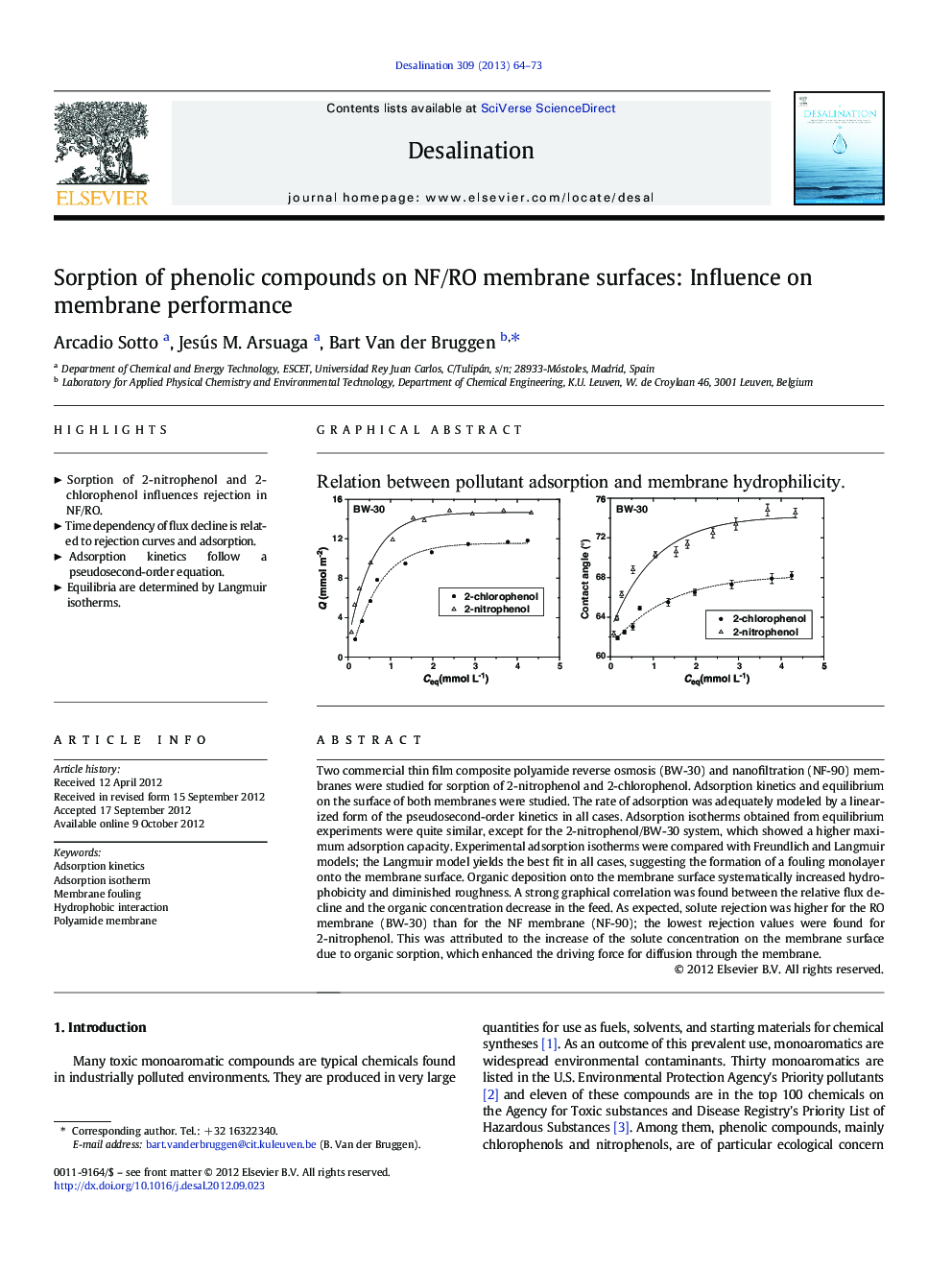| Article ID | Journal | Published Year | Pages | File Type |
|---|---|---|---|---|
| 624063 | Desalination | 2013 | 10 Pages |
Two commercial thin film composite polyamide reverse osmosis (BW-30) and nanofiltration (NF-90) membranes were studied for sorption of 2-nitrophenol and 2-chlorophenol. Adsorption kinetics and equilibrium on the surface of both membranes were studied. The rate of adsorption was adequately modeled by a linearized form of the pseudosecond-order kinetics in all cases. Adsorption isotherms obtained from equilibrium experiments were quite similar, except for the 2-nitrophenol/BW-30 system, which showed a higher maximum adsorption capacity. Experimental adsorption isotherms were compared with Freundlich and Langmuir models; the Langmuir model yields the best fit in all cases, suggesting the formation of a fouling monolayer onto the membrane surface. Organic deposition onto the membrane surface systematically increased hydrophobicity and diminished roughness. A strong graphical correlation was found between the relative flux decline and the organic concentration decrease in the feed. As expected, solute rejection was higher for the RO membrane (BW-30) than for the NF membrane (NF-90); the lowest rejection values were found for 2-nitrophenol. This was attributed to the increase of the solute concentration on the membrane surface due to organic sorption, which enhanced the driving force for diffusion through the membrane.
Graphical abstractRelation between pollutant adsorption and membrane hydrophilicity.Figure optionsDownload full-size imageDownload as PowerPoint slideHighlights► Sorption of 2-nitrophenol and 2-chlorophenol influences rejection in NF/RO. ► Time dependency of flux decline is related to rejection curves and adsorption. ► Adsorption kinetics follow a pseudosecond-order equation. ► Equilibria are determined by Langmuir isotherms.
